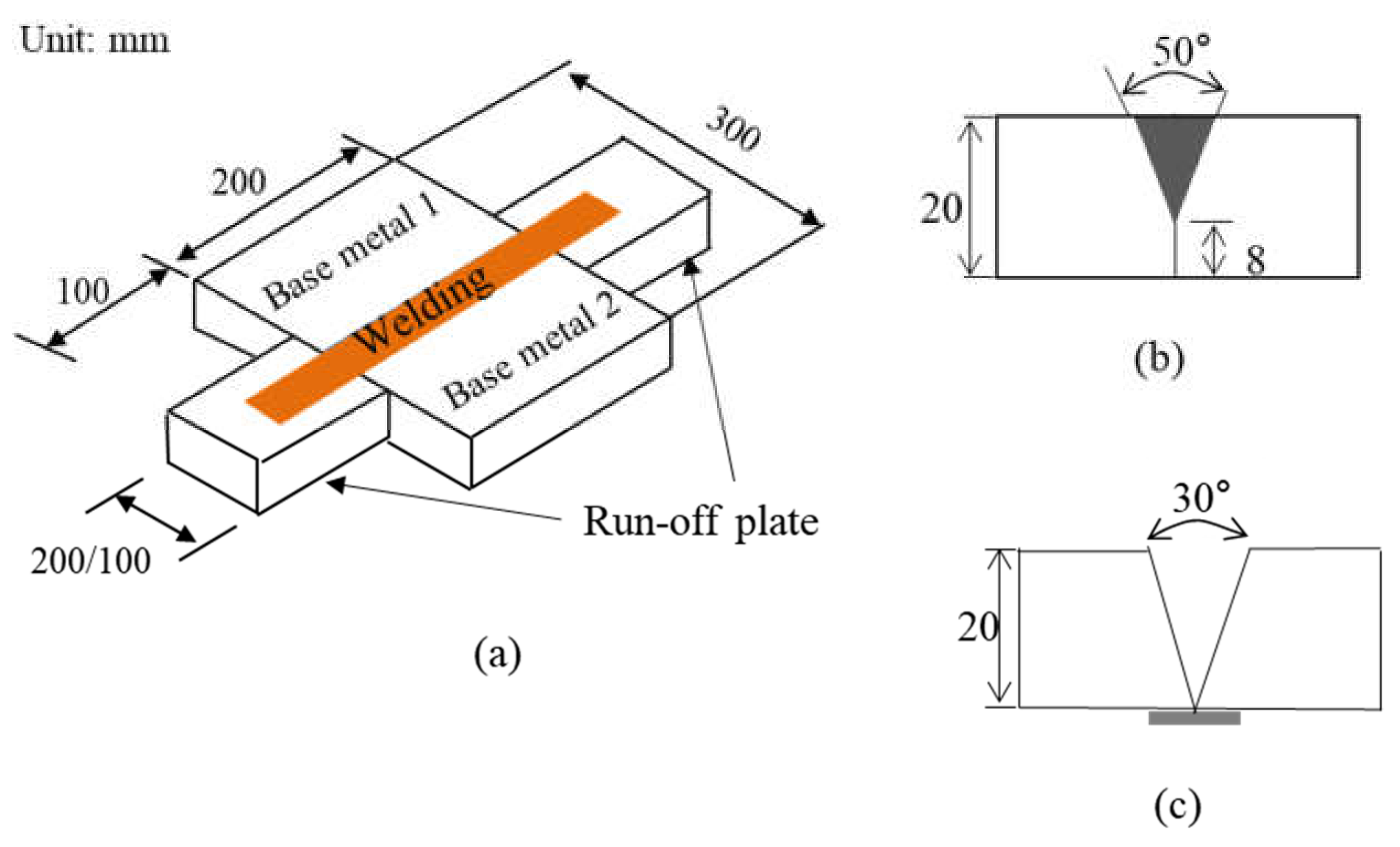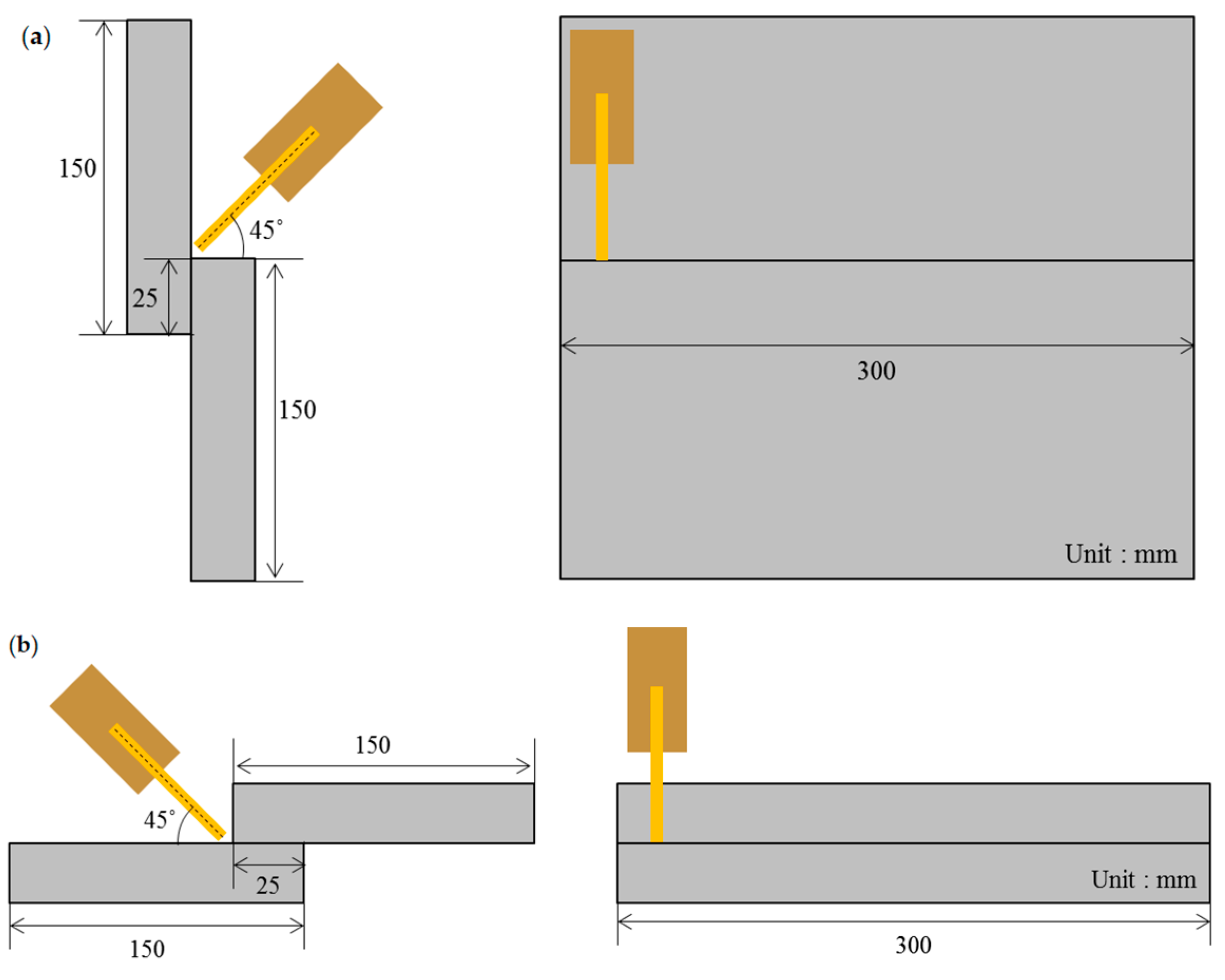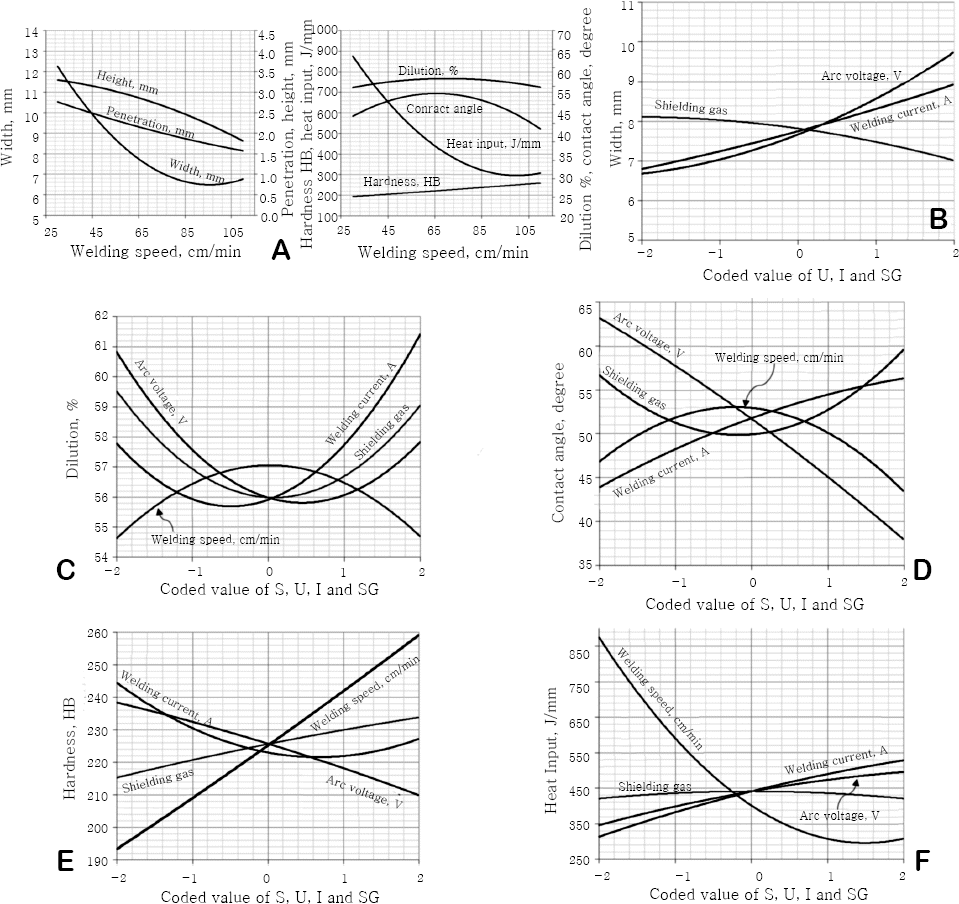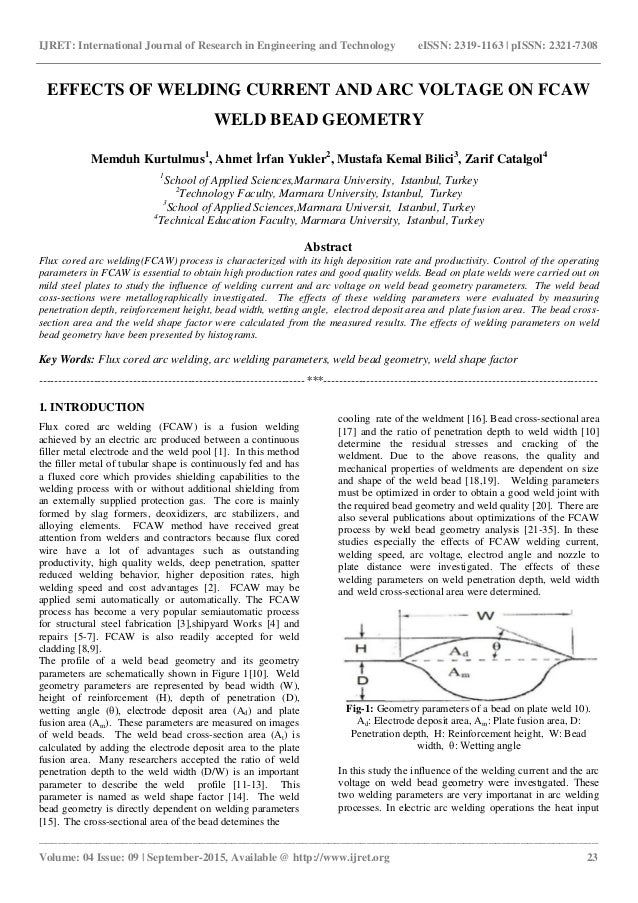Weld Bead Geometry And Shape Factor
Weld penetration is generally considered to increase with the current. Penetration p reinforcement height h weld bead widthw weld penetration shape factor WPSF defined as the ratio of.
 Direct Effects Of Welding Parameters On Oscillation Width Scientific Diagram
Direct Effects Of Welding Parameters On Oscillation Width Scientific Diagram
Explore Weld bead geometry and shape factor
Weld bead shape 1.. Weld penetration shape factor WPSF is another term that provides the information about penetration pattern. The quality of the weld joints depends on the bead geometry and shape factors. Weld penetration shape factor WPSF is another term that provides the information about penetration pattern.
In this study effects of heat input and cooling rate on the weld bead shape-related parameters such as weld penetration shape factor WPSF and weld reinforcement form factor WRFF are studied during submerged arc welding SAW of high strength pipeline steel. Control of bead geometry and dilution is of utmost importance during overlay cladding. Figure 1 shows the transverse cross section of a weld bead geometry.
The weld joint is specified by the bead width height of reinforcement depth of penetration weld reinforcement form factor WRFF and weld penetration shape factor WPSF. It is a comparative measure of the transfer of energy per unit weld length. 1defined Weld Penetration Shape Factor as the ratio of the weld width to the penetration and also defined Weld Reinforce-ment Form Factor as the ratio of weld.
The bead geometry and shape to accomplish the desired mechanical properties of the weldment should be developed. Torch angle Ɵ and wire feed rate WFR on the weld bead geometry reinforcement height H depth of penetration P and bead width W. The bead geometry and the shape relationship are depicted in fig 1.
Quality of the weld bead depends mainly on the weld bead geometry and shape relationship Viz penetration weld width reinforcement dilution weld penetration shape factor WPSF and the weld reinforcement form factor WRFF. And on the shape relationships such as WPSF weld penetration shape factor WRFF weld reinforcement form factor and dilution. Bead on plate welds were carried out on mild steel plates to study the influence of welding current and arc voltage on weld bead geometry parameters.
Many high deposition arc welding processes are in use for cladding and surfacing for decades but dilution remains more or less a problem while using these processes. Heat input is very important term in context to the material thickness and is calculated using equation. The stress-number of cycles to failure SN curve and fatigue strength were obtained from the fatigue test for four types of weld bead.
The response factors namely bead penetration weld width reinforcement dilution weld penetration shape factor WPSF weld reinforcement form factor WRFF as affected by wire feed rate open circuit voltage nozzle-to-plate distance welding speed and work material thickness have been investigated and analyzed. Bead geometry is decided by its Width Reinforcement and Penetration depth. The weld bead coss-sections were metallographically investigated.
That the study of weld bead geometry dealt with the estimation of depth of pene-tration area of bead and dilution. They reported that the wire feed rate was the most significant parameter in reverse polarity that affect penetration and percentage dilution due to increased heat input to the base metal. Bead geometry is decided by its Width Reinforcement and Penetration depth.
During welding there are many factors which affect the bead geometry of weld metal out of which current electrode polarity electrode diameter and electrode extension primarily affect the bead width bead reinforcement and weld penetration. The bead geometry and shape relationship BG. Weld penetration shape factor WPSF is ratio of bead width W to penetration P which is calculated by equation.
It is vital to establish a relationship between process parameters and weld bead geometry to assess and control weld bead quality 2. The quality of cladded components depends on the weld bead geometry coefficients of shape of welds and dilution which have to be controlled. Many high deposition arc welding processes are in use for.
Main and interaction effects of the process variables on bead geometry and shape factors are presented in graphical form and using which not only the prediction of important weld bead dimensions. The effects of these welding parameters were evaluated by measuring penetration depth reinforcement height bead width wetting angle electrod deposit area and plate fusion area. As the current increases it results in setting up of the electromagnetic forces which cause the development of a plasma je.
Four types of weld beads with different shapes by factors such as length angle and area the welding process wire feeding speed and joint shape were changed. Optimum range of bead parameters and dilution are required for better economy and to ensure the desired mechanical and corrosion resistant properties of. The selected bead geometry parameters were bead width penetration reinforcement weld penetration shape factor WPSF and reinforcement form factor RFF.
A large number of experiments are to be conducted to predict the weld bead geometry and to develop the mathematical model. Introduction The bead geometry and shape relationships affect the load carrying capacity and number of passes needed to fill the groove of a joint Smati 1986. The mechanical strength of a weld can give good insights about the quality of the weld bead geometry which can be described by the Bead Width Height Reinforcement Weld Reinforcement Form Factor WRFF and Weld Penetration Size Factor WPSF.
Weld Penetration Shape Factor WP. Weld bead shape 1.
 Metals Full Text Dissimilar Welding Of Low Alloy Steels Welded Joints Effect Of Run Off And Run On Plates
Metals Full Text Dissimilar Welding Of Low Alloy Steels Welded Joints Effect Of Run Off And Run On Plates
 Optimization Of Submerged Arc Welding Parameters For Joining Dissimilar Materials Using Taguchi Method Semantic Scholar
Optimization Of Submerged Arc Welding Parameters For Joining Dissimilar Materials Using Taguchi Method Semantic Scholar
 Weld Bead Geometry Characteristics Along With Haz Width Deposition Table
Weld Bead Geometry Characteristics Along With Haz Width Deposition Table
 The Gmaw Current Comparison Of Weld Bead Appearance Scientific Diagram
The Gmaw Current Comparison Of Weld Bead Appearance Scientific Diagram
 A Simplified Non Linear Numerical Method For The Assessment Of Welding Induced Deformations Sciencedirect
A Simplified Non Linear Numerical Method For The Assessment Of Welding Induced Deformations Sciencedirect
 Optimization Of Submerged Arc Welding Parameters For Joining Dissimilar Materials Using Taguchi Method Semantic Scholar
Optimization Of Submerged Arc Welding Parameters For Joining Dissimilar Materials Using Taguchi Method Semantic Scholar
 A Schematic Diagram Of Weld Bead Geometry Scientific Diagram
A Schematic Diagram Of Weld Bead Geometry Scientific Diagram
 Relationship Between Weld Bead Shape And Fatigue Strength A Length Scientific Diagram
Relationship Between Weld Bead Shape And Fatigue Strength A Length Scientific Diagram
 Definition Of Weld Bead Dimensions In Multilayer Weld A Cross Scientific Diagram
Definition Of Weld Bead Dimensions In Multilayer Weld A Cross Scientific Diagram
 Metals Full Text Imperfections And Modelling Of The Weld Bead Profile Of Laser Butt Joints In Hsla Steel Thin Plate
Metals Full Text Imperfections And Modelling Of The Weld Bead Profile Of Laser Butt Joints In Hsla Steel Thin Plate
 How To Model Welds In Simulations Documentation Simscale
How To Model Welds In Simulations Documentation Simscale
 Effect Of The Welding Factors On The Bead Height Of The Weld Bead Scientific Diagram
Effect Of The Welding Factors On The Bead Height Of The Weld Bead Scientific Diagram
 Effects Of Welding Current And Arc Voltage On Fcaw Weld Bead Geometry
Effects Of Welding Current And Arc Voltage On Fcaw Weld Bead Geometry
 Schematic Sketch Of A Tig Weld Bead Geometry Scientific Diagram
Schematic Sketch Of A Tig Weld Bead Geometry Scientific Diagram
 Working Of Pfc Boost Converter Using Critical Conduction Mode Conduction Electronic Schematics Power
Working Of Pfc Boost Converter Using Critical Conduction Mode Conduction Electronic Schematics Power
 Metals Full Text Effect Of Weld Bead Shape On The Fatigue Behavior Of Gmaw Lap Fillet Joint In Ga 590 Mpa Steel Sheets
Metals Full Text Effect Of Weld Bead Shape On The Fatigue Behavior Of Gmaw Lap Fillet Joint In Ga 590 Mpa Steel Sheets
 Sheet Metal Joints Dachdecker Blech Biegen Blech
Sheet Metal Joints Dachdecker Blech Biegen Blech
 Journal Of Welding And Joining Influence Of Gas Metal Arc Welding Parameters On The Bead Properties In Automatic Cladding
Journal Of Welding And Joining Influence Of Gas Metal Arc Welding Parameters On The Bead Properties In Automatic Cladding
 Definition Of Weld Bead Dimensions In Multilayer Weld A Cross Scientific Diagram
Definition Of Weld Bead Dimensions In Multilayer Weld A Cross Scientific Diagram
 Schematic Illustration Of A Bead On Plate And The Section Line Of The Scientific Diagram
Schematic Illustration Of A Bead On Plate And The Section Line Of The Scientific Diagram
 Effects Of Welding Current And Arc Voltage On Fcaw Weld Bead Geometry
Effects Of Welding Current And Arc Voltage On Fcaw Weld Bead Geometry